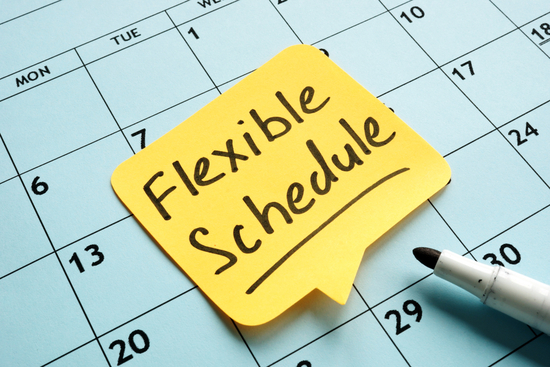8 keys to employee productivity
“Most people mistake movement for achievement,” Tony often says. Why is that? Being busy all the time is not the same thing as productivity. You can be very busy, yet not achieve any of your goals for the day, month or year. Productivity also isn’t about multitasking. You can juggle a hundred tasks and not complete any of them. Becoming more productive means working toward goals in the most efficient way possible.
When it comes to employee productivity, it’s about sharing that vision and aligning your employees with their purpose. Contribution is one of the six human needs, and it’s just as vital in work as it is in life, especially in today’s socially distanced, remote working world. It’s easier than ever to feel disconnected, uninspired and bored. Yet employee retention and productivity depend on a workforce that is engaged and happy.
New challenges for measuring employee productivity also arise since working from home has become more commonplace. Wondering how to measure employee productivity when you don’t even see your employees for days at a time or only on screens? These are the challenges modern leaders must overcome in order to ignite passion and employee productivity at their companies.
How to increase the productivity of employees
Employee productivity is about much more than delegating tasks or reprimanding employees for underperforming. It’s certainly about more than providing monetary rewards or pizza lunches. It’s about investing in your employees and discovering what drives them.
1. Focus on outcomes
“Focus on outcomes, not on activities,” Tony says. The very first question you must ask is “What’s my result?” It’s impossible to know how to measure employee productivity without knowing exactly what productivity looks like. You have to know exactly what it is you want from your employees before you can decide whether they are achieving it. This is the first step of Tony Robbins’ Rapid Planning Method (RPM), and the clearer you are about what you want, the faster you can get there.
The second part of RPM is purpose: “Why do I want it?” Tony says, “80% of success is why, 20% is how. Get a big enough why, and people will figure out how to do it. So you better know your why.” Purpose is the emotional fuel that keeps employees going. Knowing their purpose will help them get inspired and make a huge difference in employee productivity.

2. Create clear goals

Another question RPM asks is, “How do I achieve this?” Every outcome will have multiple “hows” you can use to get there. Here’s what Tony recommends: “Brainstorm all the hows you can think of, then narrow it down to the 20% that will get the most results.” This is how you create a massive action plan (MAP). MAPs aren’t to-do lists; they’re visions – for your day, your month and your year. They replace lists of tasks with the most productive objectives and maximize your employees’ time.
Take it from Tony: “If you teach your whole company to do this, your company will go to levels you can’t even imagine, because everyone will maximize their productivity.”
3. Provide great leadership
The number one leadership skill that will improve your employee productivity is communication. Be clear about your goals, as well as what’s expected of each individual employee. Communicate your company vision to inspire your employees. Talk to your team directly instead of sending mass emails or only chatting with company leaders.
Great leadership also includes knowing when to delegate. It can be tempting to micro-manage every aspect of your business – but remember that you hired your employees for a reason. Delegating tasks doesn’t just improve your employee productivity – it also improves workplace trust by showing your team that you believe in their skills.

4. Know your employees’ skills

Great leaders also get to know their employees, and it isn’t just for relationship-building. You need to learn each of your employee’s strongest and weakest skills, so that you can use them in the most efficient way possible – because you cannot delegate if you don’t know who to delegate to. Aside from delegation, getting to know your employees will give you an idea of how to encourage them to work harder.
One of the most vital tips for increasing employee productivity is this: Most of the time, employee productivity isn’t about laziness – it’s about leaders who don’t know how to inspire their teams.
5. Embrace feedback
Performance reviews aren’t out of style – give them at least once a year. Ideally, you’ll also be giving on-the-spot feedback as needed throughout the year. Reviews and informal feedback both help you set expectations and set a baseline for how to measure employee productivity. Just ensure your feedback is objective, constructive and goal-oriented. Most employees welcome feedback presented in this way. They want to improve their productivity and fulfill their need for contribution.
Remember that feedback isn’t a one-way street. Ask your employees for their feedback as well. Find out what inspires them to reach goals, what they want to do in the company and what their bigger goals and dreams are. Ask what you could do to better help them improve their productivity. Maybe they need more training, more creative freedom or to understand the “why” behind their tasks. Encouraging open dialogue – that goes both ways – is key to building trust in the workplace.

6. Reward employees

Celebrating success is another aspect of creating a company culture of innovation and employee productivity. Rewarding employees for a job well done can inspire them to achieve even more and become more efficient – and it doesn’t need to be a large reward. Make an announcement at a company meeting, give verbal one-on-one praise or provide a small gift and a handwritten note.
Recognizing employees’ contributions is one of the easiest tips for increasing employee productivity and can have a big impact on morale and productivity.
7. Be flexible
As Tony says, “Stay committed to your decisions, but stay flexible in your approach.” Even before the coronavirus, 78% of employees said flexible work arrangements made them more productive. Allowing employees to work when and where they can best focus their energy and get things done is key to how to increase the productivity of employees.
Now it’s even more important to understand that your employees may be having a tough time with the “new normal.” Many people are struggling to co-work with partners in improvised home offices and children they’re now responsible for educating on top of other parental duties. Stay flexible: Provide extra time off. Schedule fewer meetings. Check in and adjust as needed. Employee productivity will skyrocket.

8. Provide the right tools

Technology is keeping pace with the latest developments in the workplace. Zoom’s revenue increased nearly 370% year over year in 2020. Startups like Bramble and InEvent are hoping to challenge that monopoly, and virtual conference platforms like Whova are also on the rise. There’s no shortage of technology that can keep your workers connected and productive.
Comfort also matters: Employee productivity increases 14% when working in a more comfortable workplace. A work-from-home culture does not mean that businesses no longer need to invest in ergonomic seating, proper monitor mounts or up-to-date computers.
How to measure employee productivity
Measuring employee productivity has been a challenge for managers since the dawn of business. But today, we have formulas, software and tools that can help.
The OKR system that Google and other large tech companies use and the Salesforce V2MOM app both have built-in employee productivity trackers. Small business owners must create their own performance metrics using the chunking method.
Break your work down into smaller tasks. In order to complete a project or assignment, what do your employees need to do? Assign each smaller task an average time it takes to complete. This not only allows you to measure employee productivity, but also allows you to better delegate work, a key component of leadership.
You can also use formulas to calculate whether your employee productivity is improving over time. The most basic formula is total output / total input = productivity. Take the amount of money your company generated over a set period of time and divide it by the total number of hours worked to get your labor productivity. For example, if you generated $100,000 worth of goods or services using 2,000 hours of labor, your productivity is $50 per hour of work. If this number goes up, your productivity is increasing.
Knowing how to increase the productivity of employees impacts your bottom line in very real ways. Get even more information on how you can run your business and your personal goals at maximum efficiency in the RPM Life Management System.
Ready to take your employee productivity to the next level?
Learn how to increase employee productivity with Tony Robbins’ 7 Forces of Business Mastery free content series.